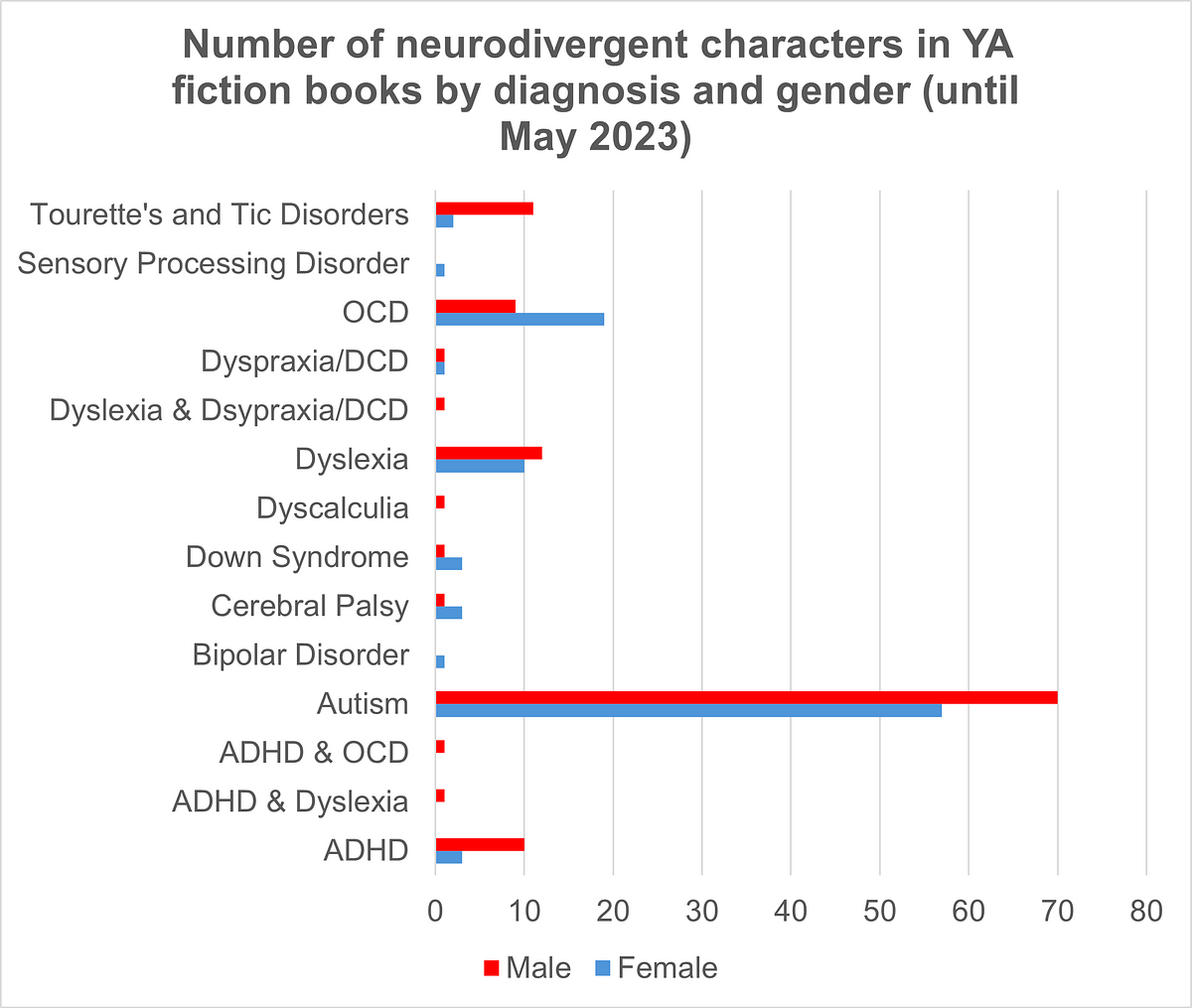Looking for all Articles by Charlotte Webber?
Neurodivergent characters in YA fiction: who is being represented?
This article was written by Charlotte Webber, an Autistic researcher on the Neurodiversity and Narrative Fiction project who works at Scottish Book Trust and the University of Edinburgh.

Scottish Book Trust has recently collaborated with researchers at the University of Edinburgh, BookTrust, National Literacy Trust and other practice partners to explore the representation of neurodivergence in YA fiction.
The Neurodiversity and Narrative Fiction(this link will open in a new window) project aimed to explore neurodivergent teenagers’ perspectives on the representation of neurodivergence in YA fiction, and find out more about the books featuring neurodivergent characters that are currently available for teen readers.
Why does neurodiversity representation in literature matter?
If someone is neurodivergent, it means that they may think, learn, and process information differently from most other people, perhaps by being dyslexic, Autistic, or having ADHD. Neurodivergent teenagers deserve to see themselves authentically portrayed in literature. We wanted to know more about the books they might have access to, based on books which have already been published.
As part of the project, we carried out a search for English-language YA fiction titles which feature neurodivergent characters and created a database to keep track of what we found. We recorded the diagnosis of the character (e.g., ADHD, dyslexia), as well as any other information we could find about their identity in the blurb (e.g., gender, ethnicity/race).
In total, we found 219 books for YA readers which said they featured one or more neurodivergent character. The most frequent diagnosis was Autism (127), followed by OCD (28), dyslexia (22), ADHD (13) and Tourette's and Tic Disorders (13). You can see a breakdown by gender in the table below.

Mostly, neurodivergent characters had one diagnosis (e.g. Autism), but there were some characters who had multiple diagnoses (e.g., ADHD and Autism; Moojag and the Auticode Secret by N. E. McMorran). Since many neurodivergent people have a diagnosis of more than one neurodivergent condition, it is important that these experiences are represented in the fiction books young people have access to.
There were slightly more male characters represented (119) than female ones (100), and we didn’t find any books which said they featured neurodivergent characters who identified as trans or non-binary.
Other minority identities also require greater representation. For example, we found very few neurodivergent characters who were explicitly referred to as being BAME (2) or LGBTQ+ (6) in the blurb. This suggests that characters with overlapping marginalised identities (e.g., being Autistic and Black) are either underrepresented in current YA fiction, or that this information is not easily available to readers who might use the blurb to work out if a book features characters they are likely to identify with.
Importantly, the database only shows us what is available in terms of the number of published books which feature a neurodivergent character; from this search, we aren’t able to say anything about the quality of this representation (e.g., if the characters reflect what neurodivergent young people really experience in their daily lives). It is important that neurodivergent characters are written accurately and positively, and in a way which highlights neurodivergent people’s strengths and doesn’t rely on stereotypes. You can read about what neurodivergent young people in the study thought authors and publishers should consider when writing neurodivergent characters here.
Our search has shown us that there are some neurodivergent diagnoses that are represented more frequently than others (e.g., Autism). It has also shown us that other identity characteristics may also be underrepresented in the neurodivergent characters which have been written about already (e.g., BAME, LGBTQ+). Whilst there is growing understanding of the importance of neurodivergent representation in YA fiction, writers and publishers should ensure that all young readers have access to characters that they can relate to. You can see the full database on the University of Edinburgh Literacy Lab website(this link will open in a new window).